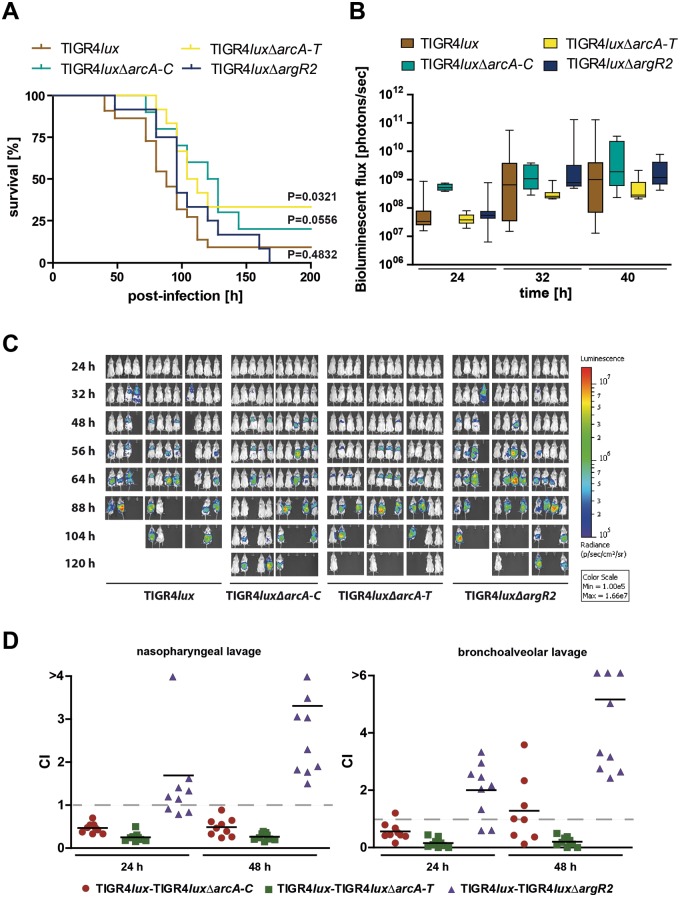FIG 6 .
Impact of the ADS enzymes, ArcD antiporter, and regulator ArgR2 on pneumococcal colonization and virulence in mice. (A) Survival of CD-1 mice after intranasal infection with pneumococci. Groups of mice (n = 12) were intranasally infected with 7.5 × 107 CFU of wild type S. pneumoniae TIGR4 or the isogenic ΔarcA-C, ΔarcA-T, or ΔargR2 mutant. (B and C) Bioluminescent optical imaging of pneumococcal dissemination after intranasal infection of CD-1 mice (n = 12). Dissemination of bioluminescent TIGR4lux, TIGR4luxΔarcA-C, TIGR4luxΔarcA-T, or TIGR4luxΔargR2 was analyzed at the time points indicated by determination of the luminescence intensity measured with the IVIS Spectrum System. The bioluminescent flux of grouped mice is represented in the box whisker graph (B). (D) Intranasal coinfection of mice with bioluminescent TIGR4lux together with TIGR4luxΔarcA-C, TIGR4luxΔarcA-T, or TIGR4luxΔargR2. Groups of CD-1 mice (n = 9) were infected with 2.5 × 107 CFU of the wild type and one of the isogenic pneumococcal mutants. At the time points indicated, mice were sacrificed and bacterial loads in the nasopharynx (nasopharyngeal lavage) and airways (bronchoalveolar lavage) were counted after the bacteria were plated on blood agar plates. CI values lower than 1 indicate higher growth of wild-type bacteria.

